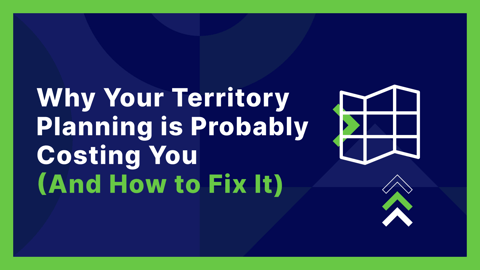Launching a product or changing your business strategy is challenging but potentially very rewarding. There’s no shortage of potential pitfalls and threats that can derail your plans. You'll have little control over these threats, whether through the actions of your competition, new technology developments, or changes in the economy.
However, there’s something in your toolbox that can help you put the odds in your favor – your Go-to-Market (GTM) plan. An effective GTM plan can act as your roadmap, guiding light in tough times, and business case for new investments. It should contain all the ideas, objectives, and tactics you need to be successful.
A GTM plan provides the ideal template to help marketing teams, sales teams, and product managers pool all their ideas, experiences, and insights and work them all into a practical plan that enhances the chance of success. It also eliminates the second-guessing that can happen when launching a new product or service and serves as a helpful reference point when the plan needs to be adapted.
A good GTM plan is a step in the business development process that shouldn’t be skimped. The main questions should be what areas should you look at, and what data do you need to capture?
- How Can a GTM Plan Help Your Business?
- Market Definition & Sizing
- Market Penetration
- Which Personas are Involved in the Buying Process?
- Territory Planning
- Quota Planning and Sales Incentive Planning
- Leveraging Technology to Support GTM Planning
How Can a GTM Plan Help Your Business?
Before we go into all the detail, let’s look at why you should invest time and effort in building a GTM plan.
There are so many variables and options involved in the process that it’s easy to become overwhelmed. There might be a temptation to try various options, whether TV advertising, channel selling, email, social media marketing, or anything else. Some will work better than others, and the GTM plan will help you decide where best to invest.
When building your GTM plan, there are some key questions you’ll need to answer. For example:
- How large is your addressable market?
- What’s the potential market penetration for your product or service based on the characteristics of your offering?
- What sectors, regions, or demographics are in your sweet spot?
- What’ll be your customer’s standard buying cycle?
- How many people will be involved in the buying decision? Is it an enterprise sale? What’ll be the likely sales cycle? Is there a way that you can adapt that model to suit your business need?
- What problems does your product solve? What’s the business case for purchasing it?
- What personas will be your target audience? What might be the best way to engage with them? Will social media work better than cold calling, or might working with your industry partners prove more fruitful for you?
With all this information in your hands – and we’re only scratching the surface here – you can start to define your whole sales and marketing strategy based on the market opportunity, the needs of the business, and the resources available to you.
So, let’s explore how you can best do this, using technology to help you make the most of the opportunity in front of you.
Market Definition & Sizing
An accurate assessment of the potential market is the foundation for any GTM plan. It begins to give you a sense of the scale of the sales and marketing resources you’ll need to allocate to capture the opportunity.
Defining a market can be complex and needs to be thought about carefully upfront. It might be as simple as any inhabitant in a specific town, city, state, or country, but the reality is usually much more complex. In sophisticated markets, many more variables are typically involved.
For example, a more helpful definition of a geographical market for B2C vendors might include additional variables, such as specific age groups and certain income brackets. It might consist of a measure for assessing propensity to buy your product or service based on other insights, such as previous purchasing patterns. For B2B sellers, these variables may include specific business sectors, e.g., retail, financial services, or logistics, and the size of the target businesses (small, medium, or enterprise), typically measured by headcount or turnover.
With a defined market, you can begin to make your plans. The data you use to create this picture must be accurate, current, and comprehensive. It might come from a range of external sources and data sources within your business.
Market Penetration
With your addressable market clearly defined, you can understand your likely penetration or market share. In an ideal world, this will be 100%. However, the reality will be very different.
You’ll have direct competitors chasing the same business, or your target audience might be solving the same problem as you are but using a different approach which means they may want something other than your product or service.
What’s Your Sweet Spot?
One aspect to consider, especially when considering which sectors or segments to prioritize, is your ‘sweet spot’ – that area where your product or service is best suited, whether based on price point, ease of use, or meeting an especially compelling need.
Making this assessment will depend on the experience you have and can help you significantly when creating your GTM plan.
What’s Your Customer’s Buying Process?
When developing your GTM plan, it’s critical to understand how your customers will buy from you to properly align your sales process with their buying process.
Some purchases, especially in B2C, are genuinely spontaneous, while others are often influenced by brand and advertising activities. Other B2C buying decisions are more considered and likely involve buyers researching websites, pricing comparison sites, and more.
In the B2B sector, the process is typically more complex. It’s common for several people to be involved in the buying decision, and it can be a mix of users: technology analysts, operational managers, and an executive decision-maker.
For B2B buyers, the research process will likely involve some initial research, whether it be reading a blog post, downloading a whitepaper, or attending a webinar or event. Ideally, this will lead to further, increasingly detailed research, leading to a defined and approved business project which your company will be invited to bid on. Thankfully, modern digital capabilities allow you to track, analyze, and capitalize on all this activity and use it to shape your GTM plans.
The challenge for many businesses is that the traditional B2B sales model is changing. Rather than engaging with a salesperson, which some buyers find unproductive, many people are opting for buying models where they can do their research online. And when they’re ready, they’ll start using a product directly, either as a free trial or in a limited way, to see how it might meet their needs. These product-led sales models - as used by Dropbox, for example – are designed to make it easy for users to act as their own ‘decision-makers’ and start using products and services with minimal investment and risk.
These developments place a premium on constantly reviewing buyer behavior, finding new opportunities, and identifying developments you might need to defend against.
Which Personas are Involved in the Buying Process?
Understanding which personas are involved in the buying process, especially in B2B sales, helps you better understand how to create a GTM plan that moves the needle. People at various levels of a business will have different needs.
For example, users will be interested in how easy it is to utilize a product, managers and executives will be interested to learn more about reporting capabilities, and technology analysts will be interested in security capabilities.
The business problems each function will be trying to address will vary by company and project. In essence, to proceed, any project must help achieve at least one of these objectives:
- ·Cutting costs
- Increasing revenues
- Reducing risk
- Launching or enhancing products or services
In some sectors, compliance can also be a significant driver for business investments.
There’s value in understanding the use cases that you address. They can act as hooks that you can use to develop stories for blog posts, case studies, or training materials, for example, to help build your sales pipeline.
The personas involved in the decision-making processes can often be found in your web traffic and CRM platform. Of course, your sales team will be able to give you a valuable perspective on this too.
What Types of Content Do You Need?
Researching your customers’ buying process and the buyer personas you need to engage with will also give insights into the content types that’ll convert their interest into leads for your business.
As we’ve touched on already, there’s a need for a thread that allows prospects to move through the buying process at their own pace. This process could involve social media content, emails, blogs, videos, webinars, events, demos, and more.
These lie at the core of any digital marketing strategy, and much of the value lies in understanding how each piece of collateral ‘performs’ in the sales process. You can track how often it was accessed and how it encouraged people to explore other material. You can create more material you know will work and ditch content that doesn’t create value.
Capturing this insight can significantly help you in your GTM planning as you look for the best tactics to attract and convert your prospects. It also enables you to optimize your GTM process over time as you experiment with new material and get more feedback from various sources.
Territory Planning
Much of what we’ve covered falls into the marketing function’s contribution to the GTM plan. But how do we best handle the contribution of the sales team?
Enabling the sales team to follow up on the leads created by the marketing function is key to the whole process. Designing sales territories is a critical success factor in maximizing revenue and growth and ensures that customers and prospects get the proper attention they need. As we highlighted earlier, the size and number of territories and the structure of the sales teams that support them will depend on several issues, including how customers buy and make their decisions.
Designing territories is as much a science as an art, so weighing up the pros and cons of various territories models based on market data will make it much more likely that you’ll find the right approach for your company.
Quota Planning and Sales Incentive Planning
Another piece of the GTM jigsaw is the sales quota plan, which dovetails with the sales territory plan. The high-level objective here is to align the volume and type of sales activity with the business’s revenue needs and how customers will buy from you.
Again, it’s as much of an art and science, but you can combine quota and territory models to help you design sales incentive plans that get you the desired results. You can determine which commission models will work best for your business depending on how your customers buy from you, the length of the sales cycle, and the typical order value.
Leveraging Technology to Support GTM Planning
The volume of data that sales managers and marketers can use – from CRM platforms, eCommerce systems, finance systems, and industry data – allows them to get insights and perspectives that would make their predecessors green with envy. But this capability is double-edged. While data can help you, it can easily overwhelm you if you’re unprepared.
Modern SaaS-based platforms can capture and consolidate large volumes of sales and marketing-related data that allow AI capabilities and sales and marketing teams to analyze the trends and dynamics of the sectors they want to target.
These tools are typically designed for non-technical users, so key attributes covering issues like data integration, data analytics, modeling, and report creation are delivered at the click of a mouse without the need to master complex scripting languages.
These data analytics tools help companies sift all their data to provide information about the volume of potential customers, growth trends, customer location hotspots, and much more. They can help companies begin to understand the size of the opportunity open to them, as well as allow them to generate a range of options around GTM plans that can help them understand how their business can grow at the speed they’re looking for.
Get more insights into sales planning basics and a deeper look into how sales technology can help you optimize your territory and quota plans with our guide, The Complete Guide to Sales Planning.




